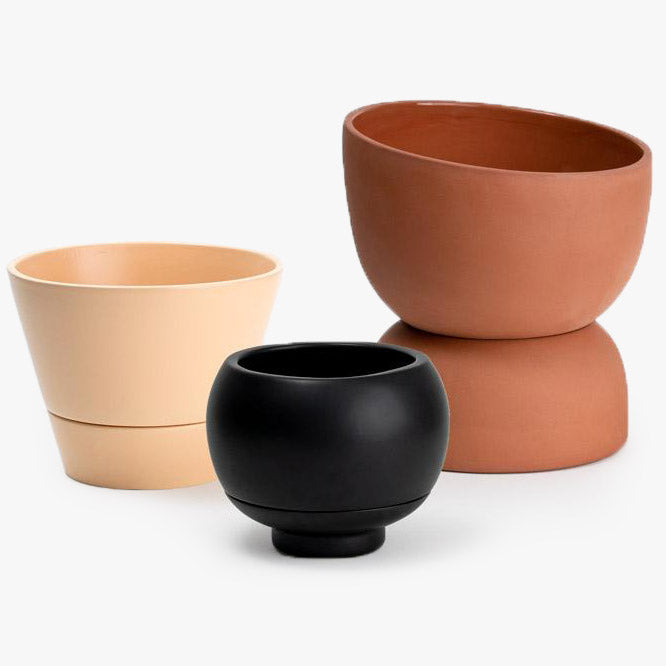Standard Planter Instructions
All of our Standard Planters include a removable drainage plug to give our customers the option of drainage. While no drainage is sometimes preferred for its aesthetic simplicity, we don't recommend this option for beginners as watering mistakes can be hard to rectify.
Whether you choose to use drainage or not, we always recommend using a layer of drainage (such as our Aeration Stones) at the base of the planter. A drainage layer allows the plant's roots access to oxygen in the pockets between the drainage medium, and a lack of drainage can cause anaerobic damage to your plant.
If you decide to utilize the drainage hole for your pot, make sure to include a Plant Saucer beneath your pot to collect excess water. For most plants in standard planters, we recommend watering about once a week. Water the soil mass until water begins pooling in your Plant Saucer.
With no drainage hole, you will need to be more precise in your watering. While we would love to give you a specific measurement of water to provide for your plant, the reality is that a plant's water requirements vary wildly depending on factors such as light exposure and the overall health of the plant. You will need to learn to tell when the plant is thirsty based on how its foliage looks. Droopy foliage is usually the first sign: when your plant looks a little slumped over that's usually a visual indicator that it's thirsty.
The best solution for checking your plant's moisture level, drainage hole of not, is to use a Soil Probe to determine the moisture content of the soil at the bottom of the planter.
Self Watering Planter Instructions
The Self-Watering Planters require a deep and thorough watering of the topsoil after they are first planted. This is important because the roots of the plants first need to grow into the reservoir in order to drink from it. Water your plant from the top for two to four weeks before using the reservoir. During the dormant seasons, or for plants that have slower growing habits, consider top watering for longer.
TEST: After the initial top water period, fill the bottom water reservoir. If the water in the reservoir is absorbed into the planter, it means the plant is ready for regular reservoir servicing. If not, be sure to continue top watering for a few more weeks until the plant has started drinking from the reservoir.
RESERVOIR SERVICING: Once the reservoir empties on its own, do not refill the reservoir right away. Similar to how humans need a breath of air between gulps of water, most plants require a drying out period. Allow for the reservoir to empty all the way between watering. All plants are different in their needs so the amount of time the reservoir sits empty will need to be determined, but know that for most plants this period is between 1-3 days.
From here on out, you should rarely topwater the plant while using the reservoir system. Watering from below allows the plant to drink at its own pace, and can help combat certain issues like fungus gnats by allowing the top layer of soil to dry out more. Please note that if your plant's soil dries out too much, it can impair the wicking ability of the Aeration Stones in your planter. If your soil becomes too dry, we recommend giving it a thorough watering.
For more information on our Self Watering Planters include planting instructions, visit our blog post on How to Use Our Self-Watering Pots.
email signup
Get the first look at new products, collaborations, events, sales and more



